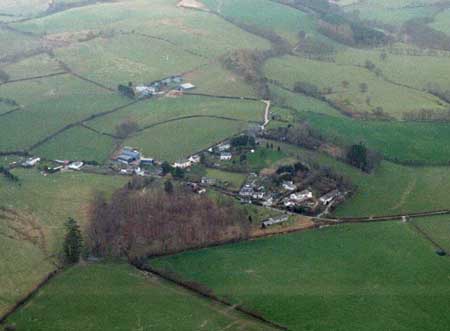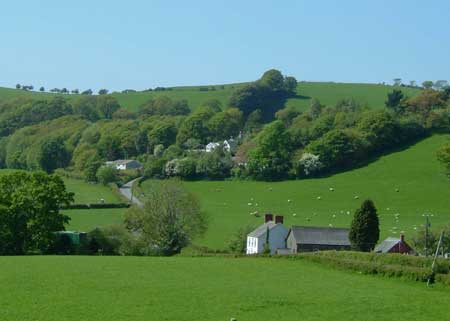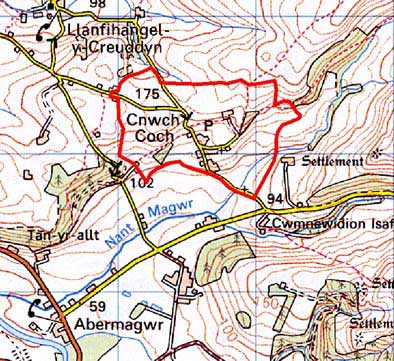|
Home > Historic Landscape Characterisation > Upland Ceredigion > |
 CNWCH COCH
CNWCH COCH
GRID REFERENCE: SN677751
AREA IN HECTARES: 79.4
Historic Background
At least part of this area, if not all, was originally common land, with rights attached to properties belonging to the Crosswood, Cwmnewidion, Abertrinant and Nanteos Estates (Morgan 1997, 209-13). By the late 18th century most of the land was divided in half by the properties of the adjoining estates - half to Crosswood and half to Abertrinant and Nanteos. An estate map of 1781 (NLW Crosswood Deeds No 5, Ser IV Vol 1, 16) shows a mixed landscape: part open ground, part enclosed, part woodland and brushwood. In May of 1797 a cottage was illegally erected at Cnwch Coch, but no land enclosed. By 1814 squatter settlements had appeared, and the occupants had divided what was left of the common between them. Colonel Vaughan ordered the cottages to be taken down, with one of his main objections being that the ‘miserable looking Huts’ could be seen from the windows of Trawscoed Mansion (Morgan 1997, 211). The squatters requested that they should be allowed to pay rent. The squatters were eventually successful in their claim to the land, as the tithe survey of 1847 (Llanfihangel y Creiddyn) records that they were freeholders. The tithe map shows a pattern of enclosure similar to todays. Two chapels were built here in the 19th century, one in 1842 and one in 1865, and later a school. It is still an active community.

Description and essential historic landscape components
This small character area lies on a steep south-facing valley side rising to undulating higher ground to the north. There is a height range of 90m to 260m. The landscape is now one of small, irregular fields of improved grazing, with stands of deciduous woodland and modern forestry plantations. This pattern seems to have emerged with the founding of Cnwch Coch squatter settlement in the late 18th century. Prior to this date the steep slopes and/or relatively high ground would seem to have excluded intensive agricultural use in the historic period; hence the reference to common in the historical sources. The fields carved out in the 18th and 19th century were formed with earth banks topped by hedges. The condition of these boundaries is good, and many of the hedges are stock-proof, though some particularly on higher ground are becoming derelict, and are supplemented or replaced by wire fences.
The loosely nucleated character of Cnwch Coch is unusual for a Ceredigion squatter settlement - a pattern of dispersed cottages is the norm. Most buildings are of rendered stone or painted stone with slate roofs. However, it is likely that the cement render on some buildings is over clom (earth) rather than stone. Most of the older houses probably date to the mid-to-late 19th century and include several examples of small single storey vernacular cottages (two are listed, also see Smith 1998, Fig. 94) as well as two storey cottages/houses in the typical regional Georgian vernacular tradition, but with stronger vernacular elements than the norm. An unusual polychrome brick cottage (listed) is located in the village. Several of the 19th century houses/cottages are modernised. Late 20th and early 21st century houses and bungalows are interspersed between the older dwellings. A school, some 19th century stone farm buildings and large modern agricultural structures are also located in the village. A 19th century chapel and house lie a little distance from the village.
Recorded archaeology consists of extant buildings.
The bounds of this landscape area are not distinct. To
the south, west and east is lower lying and more intensively farmed enclosed
land. To the north is formerly unenclosed land, which now resembles this
area.
Base map reproduced from the OS map with the permission
of Ordnance Survey on behalf of The Controller of Her Majesty's Stationery
Office, © Crown Copyright 2001.
All rights reserved. Unauthorised reproduction infringes Crown Copyright
and may lead to prosecution or civil proceedings. Licence Number: GD272221


